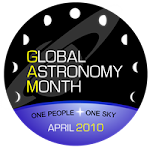
Helen Frankenthaler
December 12th, 1928 to December 27th, 2011

"Helen Frankenthaler dies at 83; abstract painter"
Helen Frankenthaler's work, which featured bursts of color achieved by pouring thinned paint onto canvas from coffee cans, took art in a new direction and gave rise to the Color Field movement.
by
Mike Boehm
December 28th, 2011
Los Angeles Times
Helen Frankenthaler, a New York artist whose bursts of color achieved by pouring thinned paint onto canvas from coffee cans helped point art in fresh directions after the initial post-World War II explosion of Abstract Expressionism, has died. She was 83.Frankenthaler died Tuesday after a long, unspecified illness at her home in Darien, Conn., her family announced.In 1952, the 23-year-old Frankenthaler hit upon her "soak stain" technique, achieving some of the vibrancy, lightness and pliancy of watercolor by thinning down acrylic paint and pouring it on a large, unprimed canvas spread on the floor of her Manhattan studio."Mountains and Sea," her breakthrough in pink, blue and green, set a style that critics — although not universally — have applauded for its lyricism and luminous use of color. Frankenthaler's stain technique influenced others such as Morris Louis, Jules Olitski and Kenneth Noland, giving rise to the Color Field movement of the 1950s and '60s.Frankenthaler was born Dec. 12, 1928, and grew up amid prestige and comfort on New York's Park Avenue, the youngest of three daughters of Alfred Frankenthaler, a New York State Supreme Court justice, and his wife, Martha. Attending the progressive Dalton School, she was taught by the Mexican painter Rufino Tamayo. She set out to be a painter after graduating from Bennington College in Vermont in 1949.Among those taking note was critic Clement Greenberg, a leading advocate of Abstract Expressionism, with whom Frankenthaler was romantically involved until the mid-1950s. Through him, she met the New York School of painters, including Jackson Pollock, whose drip-painting technique of laying a canvas on the floor and aggressively raining paint upon it would help inspire her own far more judicious and deliberate way of painting by pouring.In 1958 Frankenthaler married Robert Motherwell, a leading light from the first generation of New York Abstract Expressionists. They were divorced after 13 years. In 1994 she married investment banker Stephen M. DuBrul Jr.An early prominent forum was her mid-1960s inclusion in "Post-Painterly Abstraction," a touring survey curated by Greenberg that also featured Noland, Sam Francis, Willem de Kooning and Ellsworth Kelly.Reviewing Frankenthaler's 1967 solo show at one of L.A.'s top venues, the Nicholas Wilder Gallery, Times critic William Wilson hailed her work as "a primary wellspring in the development of stained color painting.... There is nothing easy about her large canvases.... Their jarringly factual color and sensitively considered edges finally resolve in works of awesome integrity." Major retrospectives ensued at the Whitney Museum of American Art in 1969 and the Museum of Modern Art in 1989.Opinions have varied, however. Current Times art critic Christopher Knight has described Frankenthaler as a "minor, formalist artist," and her influential "Mountains and Sea" as a "slight innovation."In the 1970s, she began to draw fresh recognition for her printmaking. She studied traditional woodblock printmaking in Japan, and applied her own abstract sensibilities to works such as a series inspired by "The Tale of Genji" from the 11th century.Frankenthaler maintained a reserved stance in public, never cultivating feminist-icon status as a lone female on the famously masculine New York scene of the 1950s. Being a woman "was unique and at the same time it was very little of an issue," she told the Los Angeles Times in 1970. "I had something to say in terms of painting and went about doing it.... What has made it work, or what makes certain paintings successful or not, has to do with my being a painter and a thinking, feeling person, more than my sex, color, height, origin."When Frankenthaler's Museum of Modern Art retrospective traveled to the L.A. County Museum of Art in 1990, Times art writer Suzanne Muchnic noted that her "mystique seems to be partly based on staying out of the limelight. Among art world insiders, she is almost as well known for living a privileged, quiet life on Manhattan's Upper East Side as for her lyrical abstract canvases."Frankenthaler did take a highly public stance during the late 1980s "culture wars" that eventually led to deep budget cuts for the National Endowment for the Arts and a ban on grants to individual artists that still persists. At the time, she was a presidential appointee to the National Council on the Arts, which advises the NEA's chairman.In a 1989 commentary for the New York Times, she wrote that, while "censorship and government interference in the directions and standards of art are dangerous and not part of the democratic process," controversial grants to Andres Serrano, Robert Mapplethorpe and others reflected a trend in which the NEA was supporting work "of increasingly dubious quality. Is the council, once a helping hand, now beginning to spawn an art monster? Do we lose art … in the guise of endorsing experimentation?"Frankenthaler, who received the National Medal of Arts from President George W. Bush in 2002, is survived by her husband, four stepchildren and six nephews and nieces."Helen Frankenthaler, Abstract Painter Who Shaped a Movement, Dies at 83"
by
Grace Glueck
December 27th, 2011
The New York Times
Helen Frankenthaler, the lyrically abstract painter whose technique of staining pigment into raw canvas helped shape an influential art movement in the mid-20th century and who became one of the most admired artists of her generation, died on Tuesday at her home in Darien, Conn. She was 83.Her longtime assistant, Maureen St. Onge, said Ms. Frankenthaler died after a long illness but gave no other details.Known as a second-generation Abstract Expressionist, Ms. Frankenthaler was married during the movement’s heyday to the painter Robert Motherwell, a leading first-generation member of the group. But she departed from the first generation’s romantic search for the “sublime” to pursue her own path.Refining a technique, developed by Jackson Pollock, of pouring pigment directly onto canvas laid on the floor, Ms. Frankenthaler, heavily influencing the colorists Morris Louis and Kenneth Noland, developed a method of painting best known as Color Field — although Clement Greenberg, the critic most identified with it, called it Post-Painterly Abstraction. Where Pollock had used enamel that rested on raw canvas like skin, Ms. Frankenthaler poured turpentine-thinned paint in watery washes onto the raw canvas so that it soaked into the fabric weave, becoming one with it.Her staining method emphasized the flat surface over illusory depth, and it called attention to the very nature of paint on canvas, a concern of artists and critics at the time. It also brought a new, open airiness to the painted surface and was credited with releasing color from the gestural approach and romantic rhetoric of Abstract Expressionism.Ms. Frankenthaler more or less stumbled on her stain technique, she said, first using it in creating “Mountains and Sea” (1952). Produced on her return to New York from a trip to Nova Scotia, the painting is a light-struck, diaphanous evocation of hills, rocks and water. Its delicate balance of drawing and painting, fresh washes of color (predominantly blues and pinks) and breakthrough technique have made it one of her best-known works.“The landscapes were in my arms as I did it,” Ms. Frankenthaler told an interviewer. “I didn’t realize all that I was doing. I was trying to get at something — I didn’t know what until it was manifest.”She later described the seemingly unfinished painting — which is on long-term loan to the National Gallery of Art in Washington — as “looking to many people like a large paint rag, casually accidental and incomplete.”Unlike many of her painter colleagues at the time, Ms. Frankenthaler, born in New York City on Dec. 12, 1928, came from a prosperous Manhattan family. She was one of three daughters of Alfred Frankenthaler, a New York State Supreme Court judge, and the former Martha Lowenstein, an immigrant from Germany. Helen, their youngest, was interested in art from early childhood, when she would dribble nail polish into a sink full of water to watch the color flow.After graduation from the Dalton School, where she studied art with the Mexican painter Rufino Tamayo, she entered Bennington College in 1946. There the painter Paul Feeley, a thoroughgoing taskmaster, taught her “everything I know about Cubism,” she said. The intellectual atmosphere at Bennington was heady, with instructors like Kenneth Burke, Erich Fromm and Ralph Ellison setting the pace.As a self-described “saddle-shoed girl a year out of Bennington,” Ms. Frankenthaler made her way into the burgeoning New York art world with a boost from Mr. Greenberg, whom she met in 1950 and with whom she had a five-year relationship. Through him she met crucial players like David Smith, Jackson Pollock, Willem and Elaine de Kooning and Franz Kline.In 1951, with Mr. Greenberg’s prompting, she jointed the new Tibor de Nagy gallery, run by the ebullient aesthete John B. Myers, and had her first solo show there that year. She spent summers visiting museums in Europe, pursuing an interest in quattrocento and old master painting.Her marriage to Mr. Motherwell in 1958 gave the couple an art-world aura. Like her, he came from a well-to-do family, and “the golden couple,” as they were known in the cash-poor and backbiting art world of the time, spent several leisurely months honeymooning in Spain and France.In Manhattan, they removed themselves from the downtown scene and established themselves in a house on East 94th Street, where they developed a reputation for lavish entertaining. The British sculptor Anthony Caro recalled a dinner party they gave for him and his wife on their first trip to New York, in 1959. It was attended by some 100 guests, and he was seated between David Smith and the actress Hedy Lamarr.“Helen loved to entertain,” said Ann Freedman, the former president of Knoedler & Company, Ms. Frankenthaler’s dealer until its recent closing. “She enjoyed feeding people and engaging in lively conversation. And she liked to dance. In fact, you could see it in her movements as she worked on her paintings.”Ms. Frankenthaler’s passion for dancing was more than fulfilled in 1985 when, at a White House dinner to honor the Prince and Princess of Wales, she was partnered with a fast stepper who had been twirling the princess.“I’d waited a lifetime for a dance like this,” she wrote in a 1997 Op-Ed article for The New York Times. “He was great!”His name meant nothing to her until, on returning to her New York studio, she showed her assistant and a friend his card. “John Travolta,” it read.Despite the early acknowledgment of Ms. Frankenthaler’s achievement by Mr. Greenberg and by her fellow artists, wider recognition took some time. Her first major museum show, a retrospective of her 1950s work with a catalog by the critic and poet Frank O’Hara, a curator at the Museum of Modern Art, was at the Jewish Museum in 1960. But she became better known to the art-going public after a major retrospective organized by the Whitney Museum of American Art in 1969.Although Ms. Frankenthaler rarely discussed the sources of her abstract imagery, it reflected her impressions of landscape, her meditations on personal experience and the pleasures of dealing with paint. Visually diverse, her paintings were never produced in “serial” themes like those of her Abstract Expressionist predecessors or her Color Field colleagues like Noland and Louis. She looked on each of her works as a separate exploration.But “Mountains and Sea” did establish many of the traits that have informed her art from the beginning, the art historian E. A. Carmean Jr. suggested. In the catalog for his 1989-90 Frankenthaler retrospective at the Modern Art Museum of Fort Worth, he cited the color washes, the dialogue between drawing and painting, the seemingly raw, unfinished look, and the “general theme of place” as characteristic of her work.Besides her paintings, Ms. Frankenthaler is known for her inventive lithographs, etchings and screen prints she produced since 1961, but critics have suggested that her woodcuts have made the most original contribution to printmaking.In making her first woodcut, “East and Beyond,” in 1973, Ms. Frankenthaler wanted to make the grainy, unforgiving wood block receptive to the vibrant color and organic, amorphous forms of her own painting. By dint of trial and error, with technical help from printmaking studios, she succeeded.For “East and Beyond,” which depicts a radiant open space above a graceful mountainlike divide, she used a jigsaw to cut separate shapes, then printed the whole by a specially devised method to eliminate the white lines between them when put together. The result was a taut but fluid composition so refreshingly removed from traditional woodblock technique that it has had a deep influence on the medium ever since. “East and Beyond” became to contemporary printmaking in the 1970s what Ms. Frankenthaler’s paint staining in “Mountains and Sea” had been to the development of Color Field painting 20 years earlier.In 1972, Ms. Frankenthaler made a less successful foray into sculpture, spending two weeks at Mr. Caro’s London studio. With no experience in the medium but aided by a skilled assistant, she welded together found steel parts in a way that evoked the work of David Smith.Although she enjoyed the experience, she did not repeat it. Knoedler gave the work its first public showing in 2006.Critics have not unanimously praised Ms. Frankenthaler’s art. Some have seen it as thin in substance, uncontrolled in method, too sweet in color and too “poetic.” But it has been far more apt to garner admirers like the critic Barbara Rose, who wrote in 1972 of Ms. Frankenthaler’s gift for “the freedom, spontaneity, openness and complexity of an image, not exclusively of the studio or the mind, but explicitly and intimately tied to nature and human emotions.”Ms. Frankenthaler and Mr. Motherwell were divorced in 1971. In 1994 she married Stephen M. DuBrul Jr., an investment banker who had headed the Export-Import Bank during the Ford administration. Besides her husband, her survivors include two stepdaughters, Jeannie Motherwell and Lise Motherwell, and six nieces and nephews. Her two sisters, Gloria Ross Bookman and Marjorie Iseman, died before her.In 1999, she and Mr. DuBrul bought a house in Darien, on Long Island Sound. Water, sky and their shifting light are often reflected in her later imagery.As the years passed, her paintings seemed to make more direct references to the visible world. But they sometimes harked back to the more spontaneous, exuberant and less referential work of her earlier career.There is “no formula,” she said in an interview in The New York Times in 2003. “There are no rules. Let the picture lead you where it must go.”She never aligned herself with the feminist movement in art that began to surface in the 1970s. “For me, being a ‘lady painter’ was never an issue,” she was quoted as saying in John Gruen’s book “The Party’s Over Now” (1972). “I don’t resent being a female painter. I don’t exploit it. I paint.”Helen Frankenthaler [Wikipedia]
Aimee's Helen Frankenthaler Gallery

































!["Coupling" 1976 [Gum-bichromate]](http://2.bp.blogspot.com/_IoU3bEFUwWc/S69lnr9G6AI/AAAAAAAAH58/O40Gg-G6rKk/S150/COUPLING+3.jpg)













